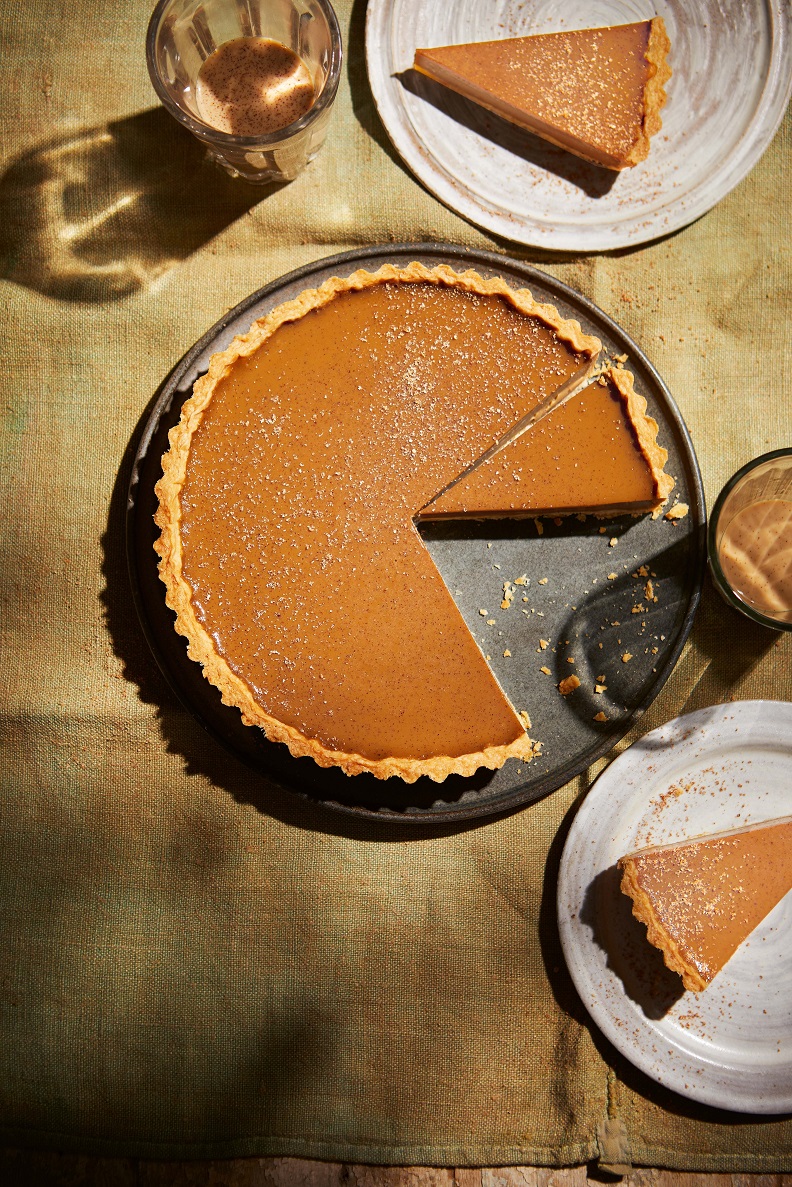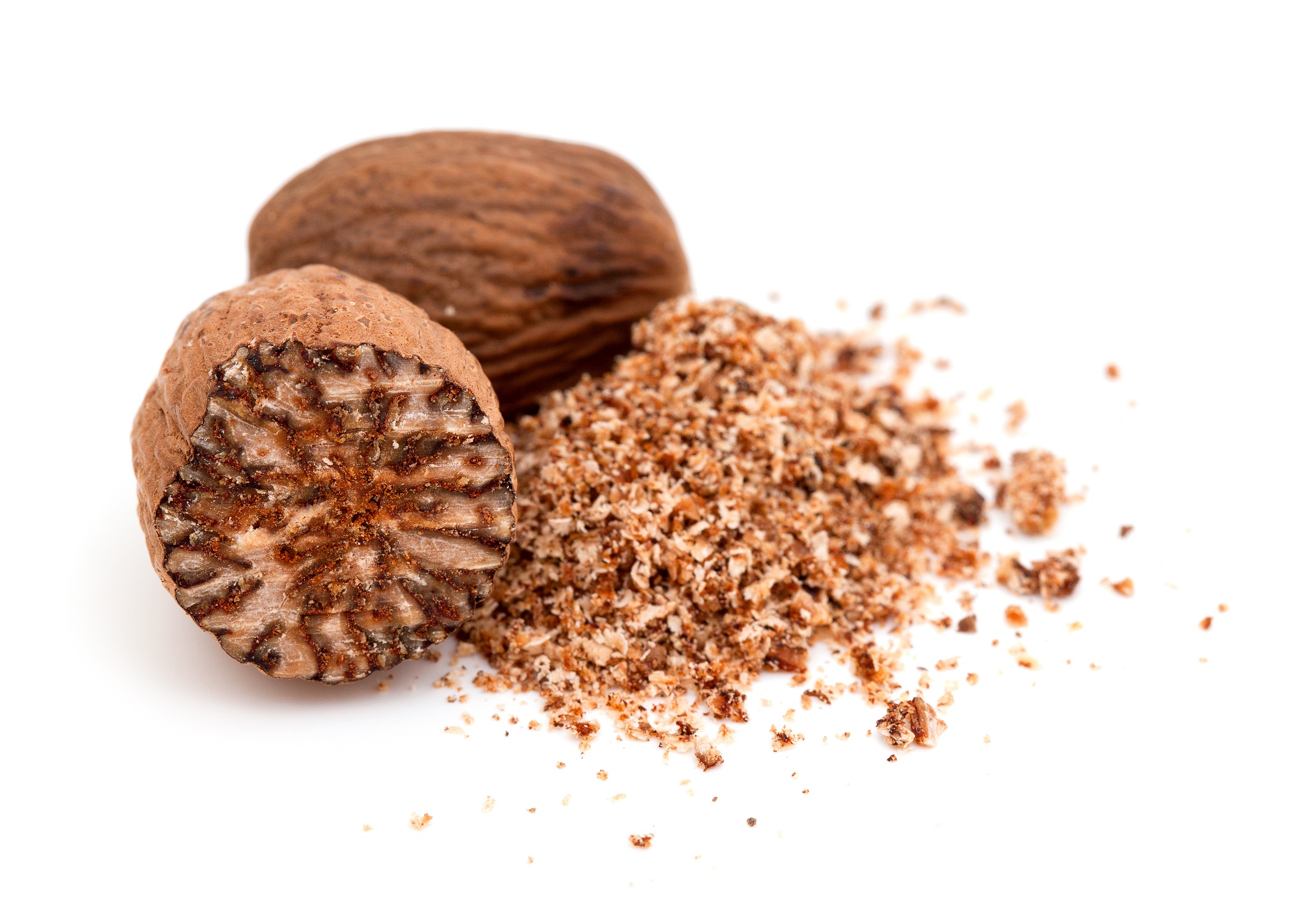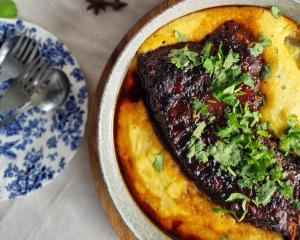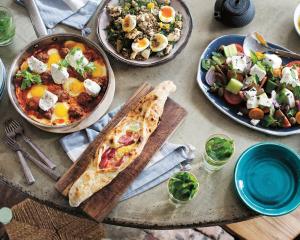
"As I scooped up mouthfuls of my dad’s famous ackee and saltfish with torn pieces of fried dumpling, or savoured a slice of caramel-sweet plantain, if I closed my eyes, I could imagine I was in Jamaica."
Her father, who came to England as a child, joined the navy and while visiting Malta met her mother and they settled in Weymouth, Dorset by the sea.
"I remember realising what we cooked at home was different to the food my friends ate ... and I couldn’t help but feel they were missing out."
When they visited her father’s parents — a six-hour drive away — her grandmother always cooked a pot of curry chicken and Thompson asked her to show her how to make it. As she grew up, she was entrusted with more complicated dishes.
Having lived in a predominantly white area, Thompson found Jamaican food has always been her way of celebrating her heritage and creating an anchor to the country of her father’s birth.
"It brought me comfort to think of my ancestors eating the same foods across the span of different generations and different continents."
In 2012 Thompson finally got to travel to Jamaica and to eat the dishes she grew up with in their country of origin. Then, while researching her cookbook Motherland, A Jamaican Cookbook, she again visited the island.

Motherland includes many of the Jamaican dishes Thompson and her family cooked at home as well as some of her own that are rooted in the island’s ingredients.
The book starts off with snacks — "might mouthfuls are arrestingly delicious" — and several can be cooked together to be enjoyed as a feast.
It is followed by chapters on fish, plant-based dishes, chicken, meat, grits and grains, and desserts.
Thompson sees her book as a starting point when exploring Jamaican food.
"Jamaica’s food sits side by side with its past ... [it is] an edible timeline of its story and a tangible expression of the mood and circumstances of each moment.
"Whether created through nostalgia or necessity, the island’s cooking is the legacy of every chapter in its history."
The book
MOTHERLAND: A Jamaican Cookbook, Melissa Thompson, Bloomsbury, RRP $56.99
 Ginger beer prawns
Ginger beer prawns

"Shrimp," as they are called on the island, have been a mainstay of the Jamaican diet since our knowledge of human history there begins. They were eaten by the indigenous Jamaicans; the Taino are recorded to have fed Columbus a meal that included them. The sea and rivers remain a source of the crustaceans to this day.
My idea for this dish came from Japanese tempura: the sweet prawns encased in a light, crispy batter is a dream combination. While tempura calls for soda water, ginger beer is a great alternative. It brings both delicate flavour and sweetness, while the bubbles make the batter as light as air.
Serves 4 as a starter
Ingredients
16–24 shell-on raw king prawns
1 garlic clove, crushed
2.5cm piece of ginger, finely grated vegetable oil, for deep-frying
50g cornflour
50g plain flour
120ml ice-cold ginger beer (not diet)
sea salt and freshly ground black pepper
lime wedges, to serve

Remove the heads and shells of the prawns, leaving on the tail sections (you can also use shelled prawns, as long as they are raw). Mix in a bowl with the garlic, ginger and some pepper and leave for 30minutes.
Pour oil into a medium-sized saucepan, following all the usual precautions for deep-frying and heating to 180degC .
Mix the flours in a bowl and pour in the ginger beer. Stir loosely, as vigorous mixing will get rid of the bubbles you want to keep; don’t worry if there are some lumps.
Just before cooking, season the prawns with a good pinch of salt. Holding a prawn by the tail, dip into the batter, then drop into the hot oil. Cook until the batter puffs up, about 2 minutes. Repeat to cook all the prawns, frying them in small batches so as not to overcrowd the pan.
Drain on a wire rack placed over kitchen paper, not directly on kitchen paper or the batter will go soggy, and serve with a squeeze of lime.
 Mutton chops with aubergine and tomato
Mutton chops with aubergine and tomato

This is a dish I’ve honed for years and it never lets me down. "Mutton" and "goat" are terms that can often be used interchangeably in Jamaica and elsewhere, but this dish uses mutton chops from sheep; the maturity of the mutton makes them particularly lovely. This recipe has elements of Jamaica’s famous curry mutton in its use of spices, but the chops here are grilled quickly rather than slow cooked as they would be for curry. Once the fat gets going, the taste is sensational. The accompanying salad is something we had growing up and everything together is just such a beautiful combination. I love it.
Serves 4
Ingredients
1 Tbsp ground cumin
1 Tbsp ground coriander
1 tsp ground turmeric
2 tsp freshly ground black pepper
1 Tbsp thyme salt
8 mutton chops
4 garlic cloves, very finely chopped or finely grated
4 Tbsp plain yoghurt
handful of parsley leaves, finely chopped
a little vegetable oil (optional)
For the salad
2 aubergines
1½ Tbsp apple cider vinegar
1½ Tbsp olive oil
½ red onion, finely sliced
2 large tomatoes, 160–180g each, roughly chopped
sea salt

Mix the spices and thyme salt together and rub well into the mutton chops. Add 3 of the garlic cloves, rub in and leave while you prepare the aubergine salad.
Slice the aubergines into 3mm slices and cook on a griddle over a medium heat without oil for 5–7 minutes per side until the slices are cooked through; you can tell by the change in texture. Continue until all the aubergines are cooked through, then cut each slice into halves or quarters, depending on size.
In a small bowl, mix together the vinegar, olive oil and red onion and season well, then mix this dressing with the aubergines and add the tomatoes. Set aside.
Mix the yoghurt with the remaining garlic, the parsley and a pinch of salt.
If you are cooking on a lidded barbecue, set it up for indirect cooking — with coals set to one side — and light it. If you are using a griddle and oven, preheat the oven to 180°C/fan 160°C/gas mark 4.
If using a barbecue, place the chops away from the coals, close the lid and cook for 15 minutes until brown. Transfer the chops to sit directly over the coals. Keep turning until they get a good crust, not neglecting the fat edge, as you want that to sizzle too. Keep turning and cooking for 5–10 minutes until they are a lovely brown all over.
If cooking indoors, rub some vegetable oil over the chops and place, fat edges down, on a hot griddle. Cook for 2–3 minutes until the fat starts to render, then move the chops on to one side and grill for another 3–4 minutes until they begin to take on some colour. Flip the chops and repeat on the other side before placing on a baking tray and cooking in the oven for 8–10 minutes, depending on their thickness and how well cooked you would like them.
However you have cooked the chops, rest them for 5 minutes. Serve with the aubergine and tomatoes and the yoghurt sauce on the side.
 Guinness punch pie
Guinness punch pie

If you like custard tarts, you will love this. I first had the idea for it a few years ago while drinking some Guinness punch and wondering if it would translate into dessert form. The answer was a resounding yes. The flavours work really well in a tart and you can adjust the intensity of the Guinness flavour by using slightly less or more. And if you don’t drink alcohol you can use 0% Guinness: it works, I’ve tried.
Stout is a really popular drink in Jamaica, with Guinness and Dragon Stout cornering the market. Guinness followed the British Empire — it is also huge in Nigeria — and the company first exported a West Indian porter from Dublin to the island in 1801, with the first export of proper Guinness going out in 1830. Its long-standing history on the island is immortalised in Guinness punch and this tart takes on those flavours beautifully. The slight bitterness of stout is softened by sweetness here, while the spices in the custard are really reminiscent of the stout itself. The tart makes a brilliant centrepiece, and will bring smiles of contentment to fans of the drink, as well as to everyone else.
 Serves 8
Serves 8

For the custard
400ml Guinness
7 egg yolks (freeze the whites for another time)
405g can of condensed milk
250ml double cream
½ tsp grated nutmeg, plus more to serve ½ tsp ground cinnamon
1 tsp vanilla extract
For the pastry
125g unsalted butter, plus more for the tin 250g plain flour, plus more to dust
45g golden caster sugar
1 egg yolk
30ml water

In a saucepan, simmer the Guinness until it reduces by about two-thirds. Leave to cool.
Meanwhile make the pastry. Using your hands, rub the butter and flour together until the mix resembles breadcrumbs. Mix in the sugar and egg yolk and then add the measured water a little bit at a time, until the dough comes together. Don’t knead any more, just wrap in cling film or greaseproof paper and refrigerate for 30 minutes.
Preheat the oven to 160degC/fan, 140degC/gas mark 3. Butter a 20cm tart tin and remove the pastry from the fridge. Dust your worktop with flour and roll out the pastry into a circle roughly 28cm in diameter. Coil the pastry around the rolling pin and uncoil over the tart tin. Carefully push the pastry into the corners of the tin and leave the edges rising above the edge. Prick the base of the tin with a fork all over, then line with greaseproof paper and baking beans or rice. Bake in the oven for 15 minutes. Take out the greaseproof paper and baking beans and bake for a further 5 minutes. Remove from the oven and leave to cool.
In a bowl, gently beat the egg yolks with the condensed milk, trying not to get too much air or too many bubbles into the mix. Stir in the double cream and reduced Guinness, then stir in the remaining ingredients.
Pour the custard into the pastry case and bake for 40–45 minutes; it should still have a wobble in the middle. Remove and leave to cool.
Grate extra nutmeg over the top and chill before slicing.
Seasons - By Alison Lambert - Available for purchase now!

The Otago Daily Times and Alison have collaborated to bring you her first cookbook – Seasons.
This book is the ultimate year-round cookbook. Seasons is filled with versatile recipes designed to inspire creativity in the kitchen, offering plenty of ideas for delicious accompaniments and standout dishes that highlight the best of what each season has to offer.
$49.99 each. Purchase here.
$44.99 for ODT subscribers. Get your discount code here.













